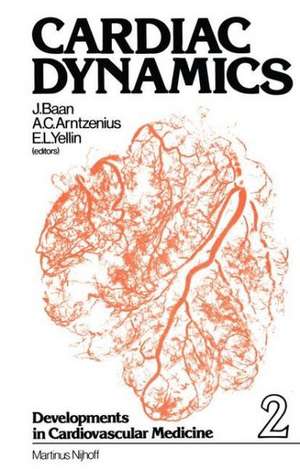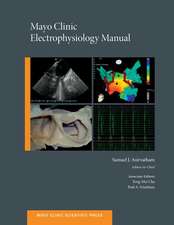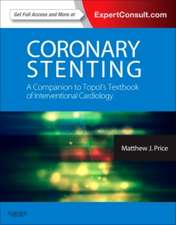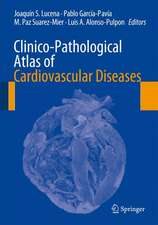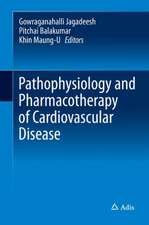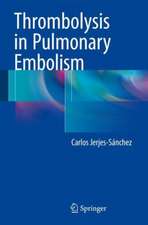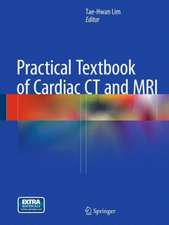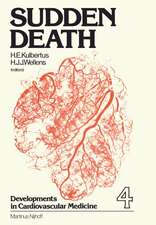Cardiac Dynamics: Developments in Cardiovascular Medicine, cartea 2
Editat de J. Baan, A.C. Arntzenius, E.L. Yellinen Limba Engleză Paperback – 6 noi 2011
Din seria Developments in Cardiovascular Medicine
- 5%
 Preț: 1484.53 lei
Preț: 1484.53 lei - 5%
 Preț: 375.17 lei
Preț: 375.17 lei - 5%
 Preț: 354.10 lei
Preț: 354.10 lei - 5%
 Preț: 1419.03 lei
Preț: 1419.03 lei - 5%
 Preț: 376.43 lei
Preț: 376.43 lei - 5%
 Preț: 1098.27 lei
Preț: 1098.27 lei - 5%
 Preț: 1438.38 lei
Preț: 1438.38 lei - 5%
 Preț: 376.78 lei
Preț: 376.78 lei - 5%
 Preț: 368.37 lei
Preț: 368.37 lei - 5%
 Preț: 380.25 lei
Preț: 380.25 lei - 5%
 Preț: 2117.58 lei
Preț: 2117.58 lei - 5%
 Preț: 367.28 lei
Preț: 367.28 lei - 5%
 Preț: 366.56 lei
Preț: 366.56 lei - 5%
 Preț: 371.10 lei
Preț: 371.10 lei - 5%
 Preț: 370.94 lei
Preț: 370.94 lei - 5%
 Preț: 783.18 lei
Preț: 783.18 lei - 5%
 Preț: 713.18 lei
Preț: 713.18 lei - 5%
 Preț: 1098.27 lei
Preț: 1098.27 lei - 5%
 Preț: 375.49 lei
Preț: 375.49 lei - 5%
 Preț: 373.47 lei
Preț: 373.47 lei - 5%
 Preț: 723.93 lei
Preț: 723.93 lei - 5%
 Preț: 1104.13 lei
Preț: 1104.13 lei - 5%
 Preț: 2117.20 lei
Preț: 2117.20 lei - 5%
 Preț: 716.09 lei
Preț: 716.09 lei - 5%
 Preț: 372.03 lei
Preț: 372.03 lei - 5%
 Preț: 722.33 lei
Preț: 722.33 lei - 5%
 Preț: 660.07 lei
Preț: 660.07 lei - 5%
 Preț: 375.34 lei
Preț: 375.34 lei - 5%
 Preț: 1423.22 lei
Preț: 1423.22 lei - 5%
 Preț: 715.35 lei
Preț: 715.35 lei - 5%
 Preț: 790.69 lei
Preț: 790.69 lei - 5%
 Preț: 720.68 lei
Preț: 720.68 lei - 5%
 Preț: 3185.49 lei
Preț: 3185.49 lei - 5%
 Preț: 1418.27 lei
Preț: 1418.27 lei - 5%
 Preț: 784.64 lei
Preț: 784.64 lei - 5%
 Preț: 714.63 lei
Preț: 714.63 lei - 5%
 Preț: 370.74 lei
Preț: 370.74 lei - 5%
 Preț: 376.22 lei
Preț: 376.22 lei - 5%
 Preț: 660.85 lei
Preț: 660.85 lei - 5%
 Preț: 368.37 lei
Preț: 368.37 lei
Preț: 381.86 lei
Preț vechi: 401.96 lei
-5% Nou
Puncte Express: 573
Preț estimativ în valută:
73.09€ • 79.42$ • 61.44£
73.09€ • 79.42$ • 61.44£
Carte tipărită la comandă
Livrare economică 17-23 aprilie
Preluare comenzi: 021 569.72.76
Specificații
ISBN-13: 9789400987982
ISBN-10: 9400987986
Pagini: 576
Ilustrații: 555 p.
Dimensiuni: 156 x 244 x 30 mm
Ediția:Softcover reprint of the original 1st ed. 1980
Editura: SPRINGER NETHERLANDS
Colecția Springer
Seria Developments in Cardiovascular Medicine
Locul publicării:Dordrecht, Netherlands
ISBN-10: 9400987986
Pagini: 576
Ilustrații: 555 p.
Dimensiuni: 156 x 244 x 30 mm
Ediția:Softcover reprint of the original 1st ed. 1980
Editura: SPRINGER NETHERLANDS
Colecția Springer
Seria Developments in Cardiovascular Medicine
Locul publicării:Dordrecht, Netherlands
Public țintă
ResearchCuprins
Section 1: Cardiac Muscle Mechanics: From the Fiber Down to the Sarcomere.- 1.1 The coming of age of cardiac muscle mechanics.- 1.2 The importance of passive elements in the contraction of the heart.- 1.3 Tension development and sarcomere length in rat cardiac trabe-culae: evidence of length-dependent activation.- 1.4 Inseparability between preload and contractility effects on pressure development in the isovolumically contracting isolated rabbit heart.- 1.5 Force-velocity-length relations in cardiac muscle segments.- 1.6 Theoretical and experimental force-velocity relations of the ventricular myocardium.- 1.7 Time course of changes in action potential duration and ejection shortening during regional transient ischaemia of pig ventricle in situ.- 1.8 A quantitative analysis of the force transients of skeletal muscle in response to quick changes in length.- Section 2: Cardiac Chamber Dynamics: From the Fiber up to the Myocardium.- 2.1 A fundamental similarity between isolated muscle mechanics and cardiac chamber dynamics.- 2.2 The chamber dynamics of the intact left ventricle.- 2.3 LV wall fibre pathways for impulse propagation.- 2.4 Transmural course of stress and sarcomere length in the left ventricle under normal hemodynamic circumstances.- 2.5 The role of wall thickness in the relation between sarcomere dynamics and ventricular dynamics.- 2.6 A model for left ventricular contractions based on the sliding filament theory.- Section 3: Pump Function and Filling: Interaction with the Low Pressure System.- 3.1 Dynamic determinants of left ventricular filling: an overview.- 3.2 Effects of the pericardium on left ventricular performance.- 3.3 Blood flow dynamics during the human left ventricular filling phase.- 3.4 Relaxation of the left ventricle.- 3.5 Intramural stress and strain analysis in the intact heart.- 3.6 Effects of intravenous isosorbide dinitrate on filling pressures and pump function in patients with refractory pump failure.- 3.7 Transfer function model of the heart.- 3.8 Dynamics of sequential large pulmonary emboli.- Section 4: Pump Function and Ejection: Interaction with Systemic Load and Coronary Perfusion.- 4.1 Pump function and its interaction with the systemic load.- 4.2 Quantification of extravascular coronary resistance.- 4.3 Studies on the optimal matching between heart and arterial system.- 4.4 End-systolic pressure as direct determinant of stroke volume from fixed end-diastolic volume in isolated canine left ventricle.- 4.5 Pump function of the left ventricle evaluated from pressure-volume loops.- 4.6 Simulation study of flow distribution across myocardium.- 4.7 Experimental studies: the appearance of large coronary arteries during arteriography.- 4.8 Hemodynamic effects of reductions in coronary blood flow caused by mechanical stenosis and platelet aggregates forming in dog coronary arteries.- Section 5: Measuring Cardiac Performance: Aims and Validity of Invasive and Noninvasive Measurement.- 5.1 Isaac Starr Lecture: Invasive and noninvasive monitoring of cardiovascular dynamics in clinical practice.- 5.2 Measuring cardiac performance: aims and validity of invasive and noninvasive assessment.- 5.3 The clinical usefulness of noninvasive and invasive tools in the assessment of left ventricular function in myocardial infarction.- 5.4 Model-based hemodynamic indicators of left ventricular performance.- 5.5 Comparative evaluation of myocardial performance factors.- 5.6 Circulatory changes during isometric exercise measured by transcutaneous aortovelography.- 5.7 Validity of parameters of ventricular performance determined by radiocardiography in patients with coronary artery disease.- 5.8 Assessment of the dynamics of cardiac responses to positive inotropic agents.- 5.9 Assessment of cardiac function in the dog by cross-sectional echocardiography.- 5.10 Dynamics of the left ventricular centre of mass in intact unanaesthetized man in the presence and absence of wall motion abnormalities.- 5.11 Cardiac pump function by ballistocardiogram: normal standards and comparison with coronary arteriograms.- Section 6: Energy Losses: Hemodynamics of Valves.- 6.1 Konrad Witzig Memorial Lecture: Some fluid mechanic theories and their application to the design of heart valves and membrane lungs.- 6.2 Fluid dynamics in the aorta.- 6.3 The closing behaviour of the natural aortic valve.- 6.4 Fluid mechanics of the aortic valve.- 6.5 Mechanical energy losses resulting from stenosis of semilunar valves.- 6.6 Pressure-flow relations and energy losses across prosthetic mitral valves: in vivo and in vitro studies.- 6.7 Blood flow velocity in subclavian artery and through mitral valve measured with transcutaneous Doppler ultrasound. The effects of exercise and mitral valve disease.- Closing Lecture: Approaching the heart of the matter.
